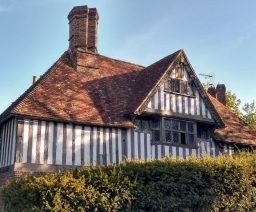Ecology and Biodiversity
The loss of natural habitats in the UK due to building development and in many cases over development, has both worried and frustrated many corners of society for decades now.
So, in response to address these environmental concerns DEFRA (The Department for Environment, Food and Rural Affairs) and Natural England have developed the Biodiversity Metric 3.0, which provides ecologists, developers, and planners with a means of assessing the changes in Biodiversity values, e.g losses or gains as a result of development or a change in land management.
The Biodiversity Metric 3.0 measures the environmental baseline before intervention and again after, and is looking for a net gain of around 10%.
Just a cursory glance at the Lost England Project site plan will tell you that the landscape, ecology, and the chance to increase Biodiversity are very much at the heart of what the project is trying to achieve. It gives us the chance to enhance our relationship with nature and also encourages its relationship with us.
Through the supplementary planting as outlined below, additional habitats would be created giving shelter and food, not only allowing existing wildlife species to increase but also encouraging new native plants and wildlife species into a welcoming environment.
New Biodiversity Gains
. Over 1500 linear metres of newly planted hedgerows
. Over 1000 square metres of new woodland
. 2100 square metres of new orchards (in addition to the existing community orchard)
. 150 new semi-mature native trees
. The supplementary planting of trees, shrubs, and herbaceous plants in the Project's cottage gardens
. Field margins created around exhibition fields to maintain overwintering for insects, mammals, and birds
. The introduction of Bee colonies
. A safe environment for mammals including an array of Hedgehogs
Three New Wildlife Ponds
. The village Pond covers 340 square metres
. The Thatches Pond covers 70 square metres
. The Pond adjacent to the Pub covers 30 square metres
. 90 linear metres of Stream
So, as can be seen from the Biodiversity gains of the proposal listed above, the project has many redeemable environmental qualities to offer, alongside highlighting our Historic relationship with the land. This puts the project in a favourable position to achieve the objective of the required 10% Biodiversity gain.
It's important to acknowledge at this stage, that there are 34 acres in total at St. Francis Fields, with a further 17 acres of pasture land including natural ponds adjacent to the main site, as indicated on the location plan. The additional 17 acres of 'pasture land' is not utilised in the main proposal of the Lost England Project. However, these fields provide the perfect opportunity to encourage more effective biodiversity management therefore linking these fields naturally into the project framework.
We need your consent to load the translations
We use a third-party service to translate the website content that may collect data about your activity. Please review the details and accept the service to view the translations.
